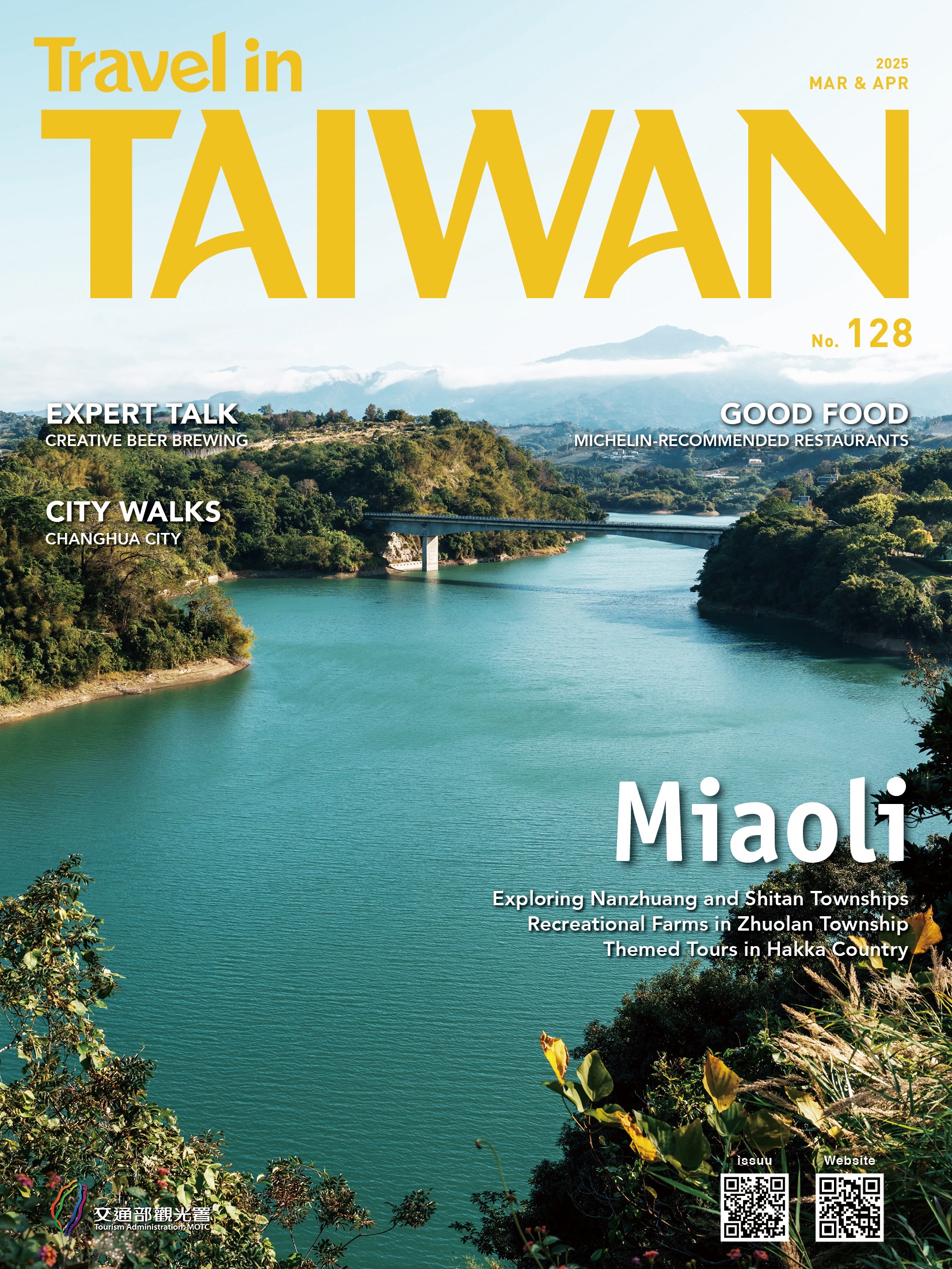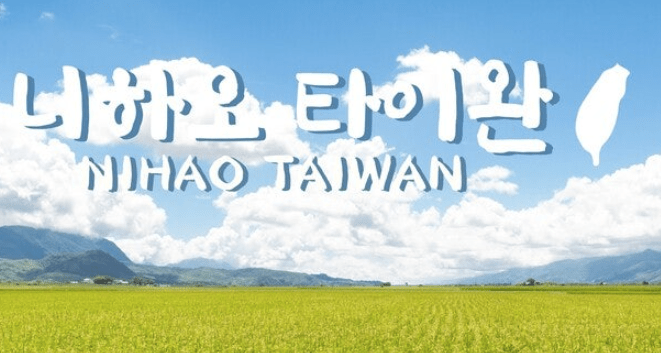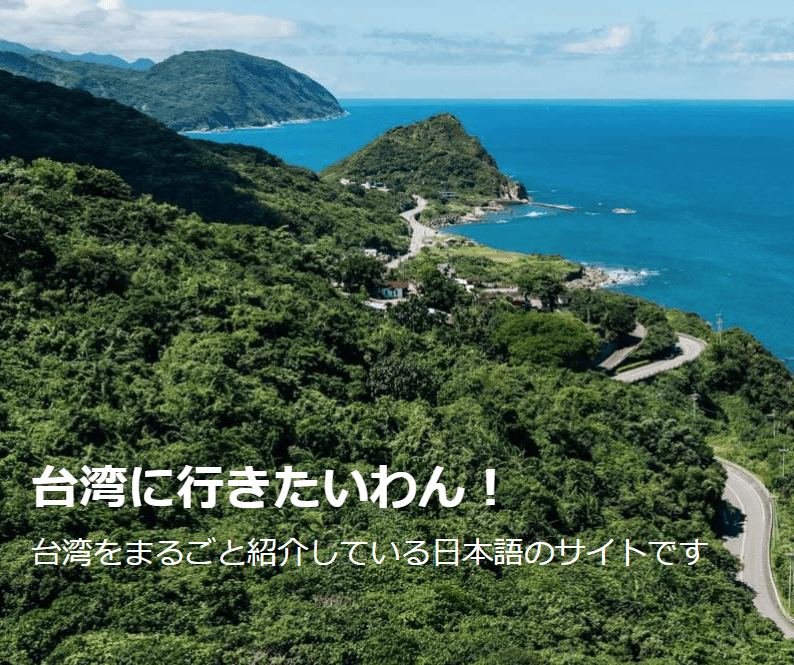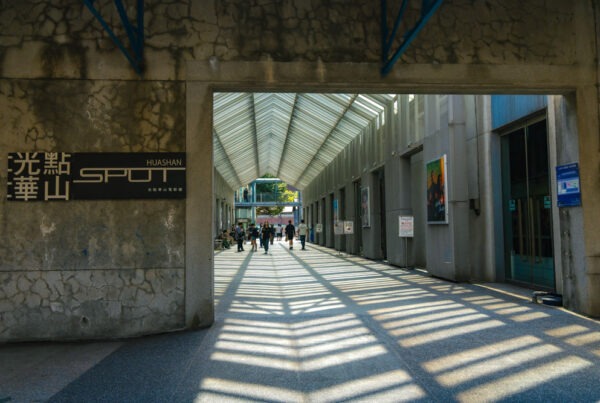Michelin-Recommended Restaurants Offering Far More than Just Fine Tastes
TEXT I JENNY LYNN CODY
PHOTOS | CHEN CHENG-KUO, VISION
Gourmands and fine dining aficionados rejoiced in 2018 when the Michelin Guide began reviewing Taiwan restaurants. Many felt this was long overdue: Taiwan has been on the world foodie map for decades, but had not yet joined the choice list of countries and cities in Asia covered by Michelin, launched with the publication of a Japan guide in 2007.
Taiwan now has 49 Michelin-starred restaurants, 38 of which are in Taipei. That number more than triples when considering all Michelin-recommended establishments, including “selected” restaurants and those that have been awarded the Bib Gourmand label and the rare Green Stars. These distinctions may be less well-known than the classic Michelin stars, but they serve as a reliable guide to some of Taipei’s best food. For this article, we have explored four such options, covering everything from innovative fusion to creative plating and environmental sustainability.
3927
At first glance, 3927 looks like any other trendy restaurant in Taipei City’s East District. You’ll immediately note it’s a little larger than its neighbors in the lanes around MRT Zhongxiao Dunhua Station, and sports moody slate-grey walls and an intentionally exposed industrial ceiling. You’ll then start to notice other details, such as the round Chinese-style banquet tables and generously upholstered Queen Anne chairs that patrons can sink into.
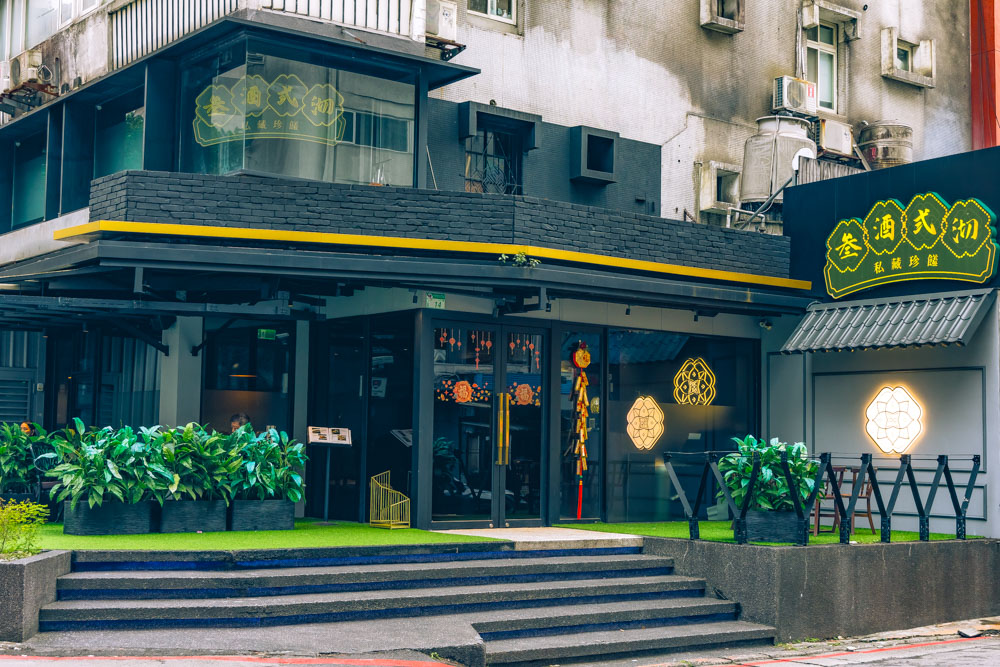
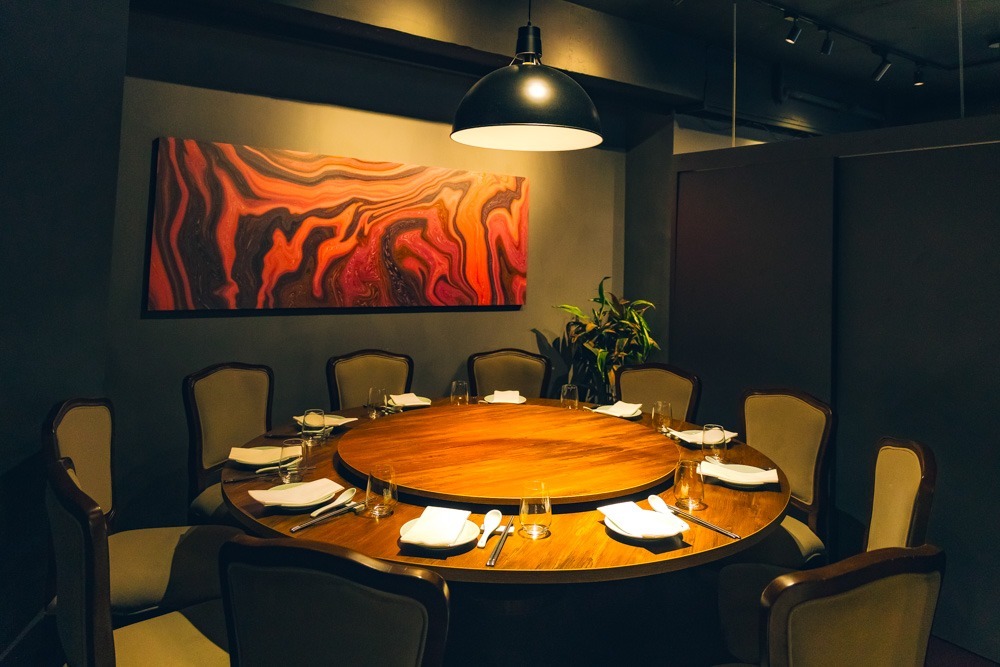
This eclectic style informs 3927’s cuisine, which might be described as modern Taiwanese fusion. The restaurant’s name is a play on a combination of Chinese terms meaning the welcoming of guests with tea and wine for a festive “banquet” atmosphere and the creation or remaking of timeless dishes with a twist. This seamless fusion earned 3927 the honor of a recommendation in Taiwan’s 2024 Michelin Guide. It’s not hard to see why: Michelin rewards creativity, and 3927’s innovative take on Taiwanese cooking hits the mark.
Chefs Jacob Wang and Fang Yongming have mastered the art of blending innovation and nostalgia: 3927’s most renowned dish is the Bread-wrapped Truffle Chicken, whose name in Mandarin evokes the enveloping warmth of childhood memories. High-quality locally sourced chicken is roasted carefully in a truffle sauce until it is nearly cooked, and then wrapped in French-style bread dough for the final bake. The European influences meld seamlessly with traditional rural Taiwanese cooking methods: the bread wrapping imitates khòng-iô (Taiwanese), or cooking in an earthen coal-fired kiln. This dish represents a synthesis of Chef Wang’s rural roots in Taiwan’s Yunlin County and his extensive experience in the United States, Canada, and Australia, where he studied Italian cooking.
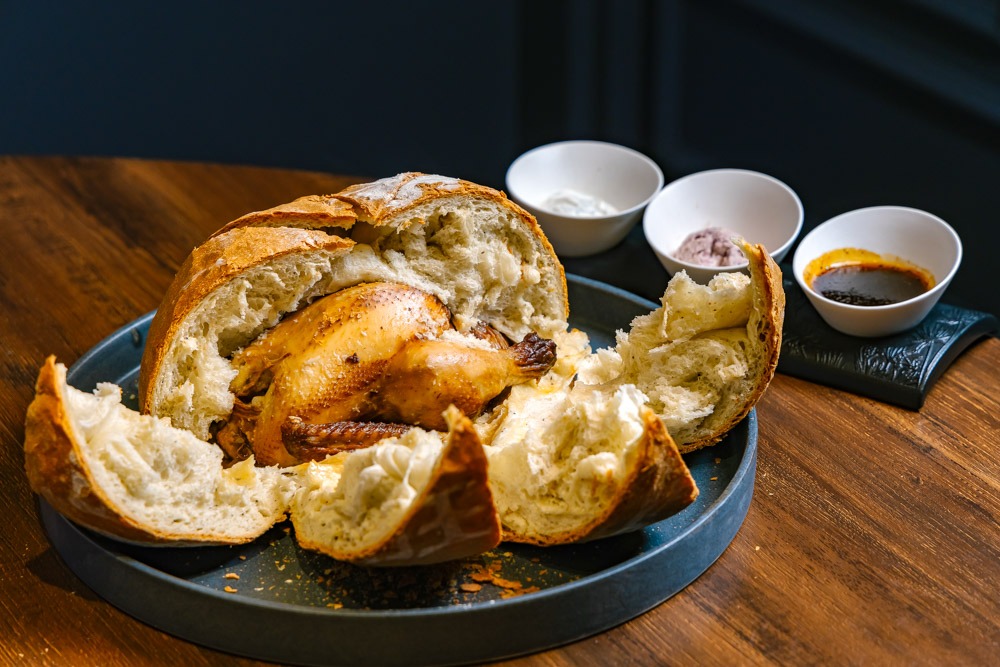
Other notable menu items at 3927 include The East Becomes the West Beef Short Rib and the Deep Affection Braised Pork Soup, the latter being the chef’s signature dish. Braised pork is added to a soup that contains “all the delicacies of the mountains and sea,” from scallops and shark skin to egg puffs and cabbage. The flavors are deep and complex, and it takes eight hours to prepare the dish. The short rib pairs serious heat – each braised and steamed morsel is covered in a Sichuanese sauce and colorful red and green chilis – with the sweet tang of grilled pineapple.
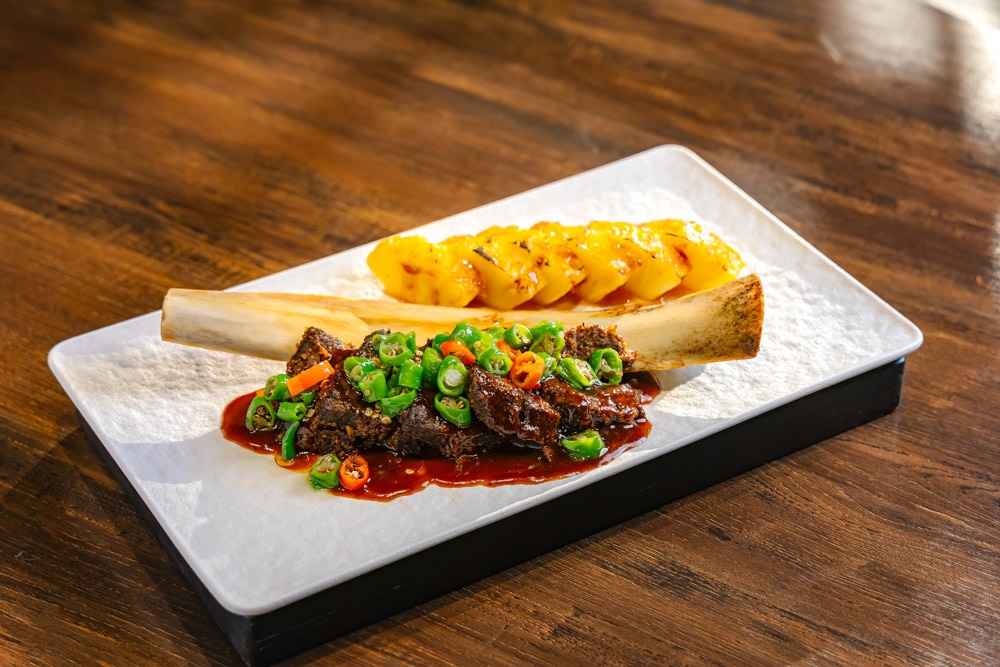
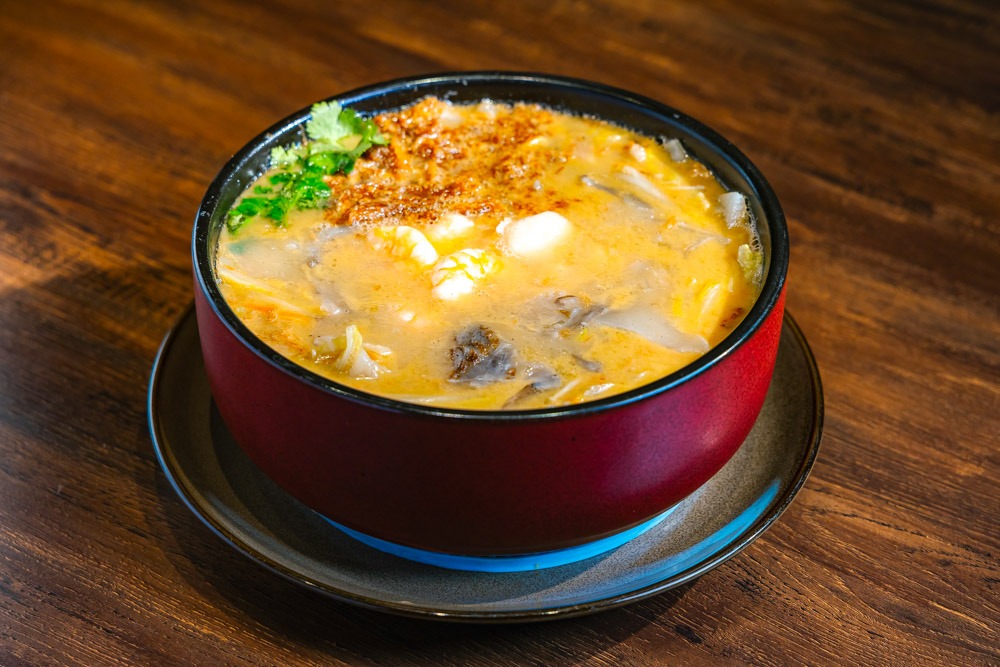
The aesthetic scene-stealer at any 3927 table is the playfully named Foreign Monks Can Chant Sutras, a fusion take on the guabao, a Taiwanese classic commonly called the “Taiwanese hamburger,” served in a Japanese-style wooden container that recalls Taiwan’s long history with Japan.
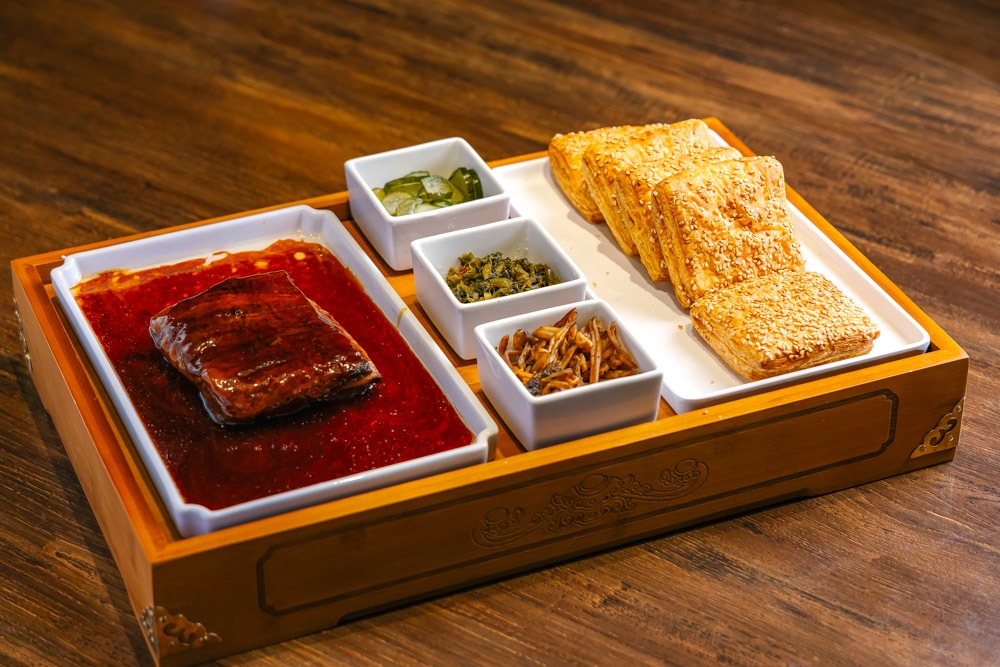
The New Taiwanese Beef Soup is an ode to southern Taiwan – Tainan-style beef soup is cooked by adding slices of fatty, high-quality beef to a bowl of smooth, black river stones, which then sputter with heat as the broth is added. Optional additions of basil, lemon, onion, and chili suggest Vietnamese pho, reflecting the long cultural exchange between Taiwan and Southeast Asia.
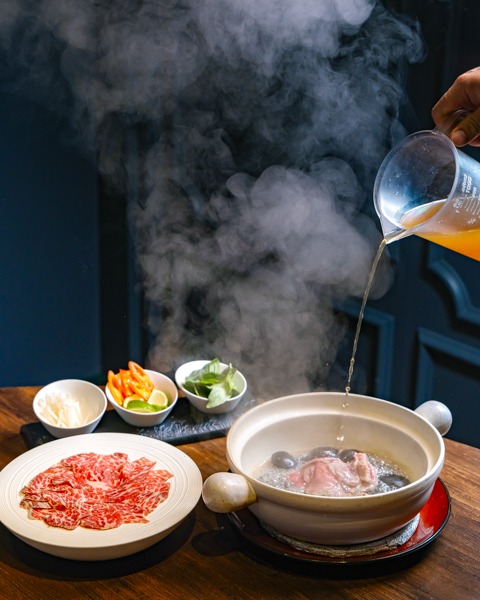
3927
(叁酒弍沏)
Tel: (02) 2731-0137
Add: No. 14, Ln. 101, Sec. 4, Zhongxiao E. Rd., Da’an Dist., Taipei City
(台北市大安區忠孝東路四段101巷14號)
Hours: Mon & Tue 5pm-10pm
Wed, Thu, & Sun 11:30am-2:30pm, 5pm-10pm
Fri & Sat 11:30am-2:30pm, 5pm-12am
Website: 3927.com.tw (Chinese)
Michelin: guide.michelin.com/tw/en/taipei-region/taipei/restaurant/3927
Yangming Spring
Tucked away in a quiet corner in the southern reaches of Yangmingshan National Park, the flagship location of Yangming Spring feels more like a Zen sanctuary than a restaurant. The grounds look like a wild garden but are carefully tended; lichen-covered Buddhas and Japanese stone lanterns, which are older than the buildings around them, peek out from the profusion of foliage. Several buildings, including an art gallery, a hut with a natural-oil press, and a separate dining room, blend into the mountain scenery, and the atmospheric restaurant evokes a Japanese teahouse: tatami mats, low seating, natural-fiber screens, a brazier for heat, iron teapots, and floor-to-ceiling windows showcasing the plant life and the Zen garden outside.
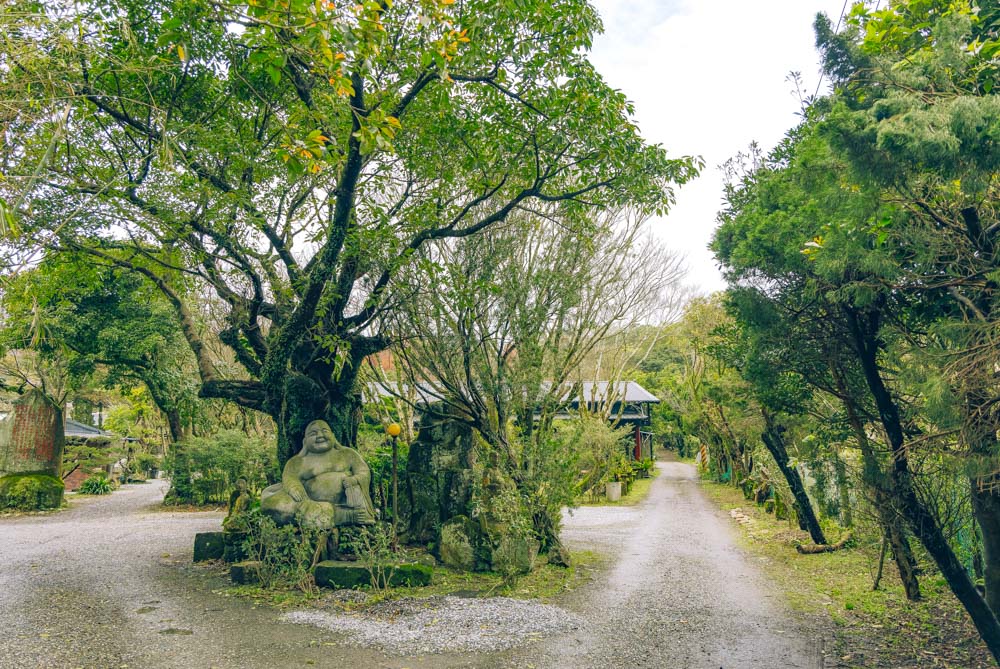
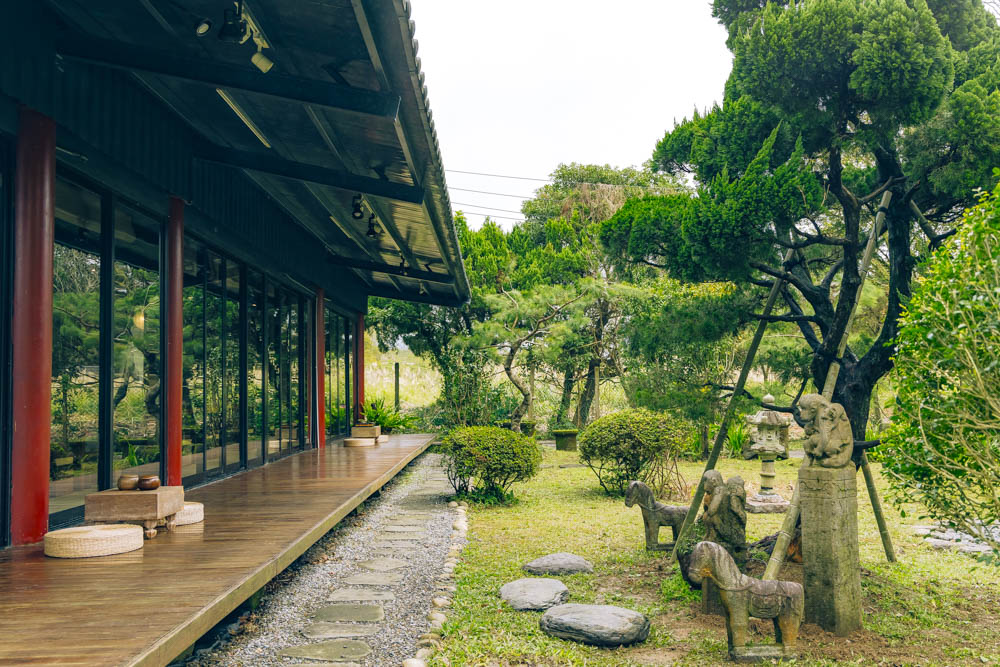
It’s not hard to see why Yangming Spring has earned consecutive Michelin Green Stars. These are awarded to restaurants that show exceptional commitment to sustainable gastronomy. This usually involves removing single-use materials from a restaurant’s supply chain, working with sustainable foodstuff suppliers, an overall reduction in an establishment’s environmental footprint, and a commitment to ethics and accountability in environmental practice. Food at Green Star restaurants is generally seasonal as well as locally and sustainably sourced. Green Stars are rarer than regular stars: only five restaurants in Taipei have been given the distinction.
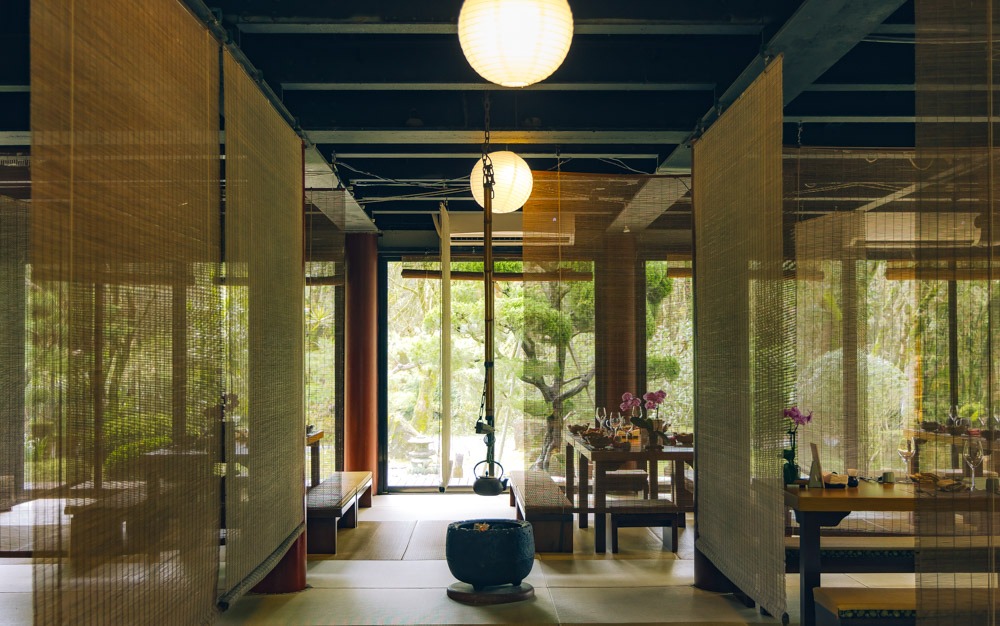
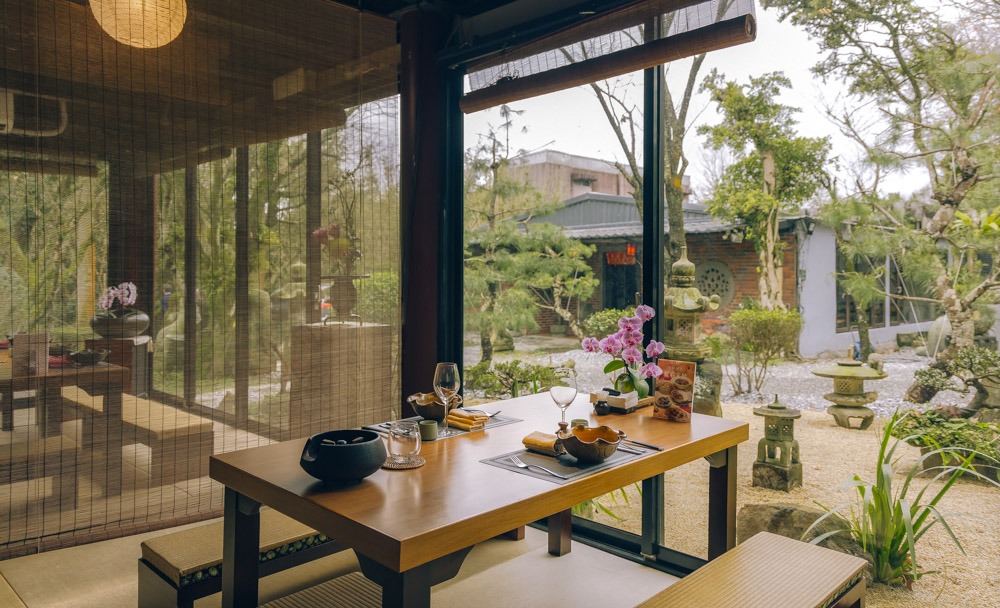
Yangming Spring’s key offerings are two prix-fixe eight-course meals, the Classic Set and the Green Star Set. Both are vegan, change with the seasons, and draw on Japanese culinary techniques and aesthetics, blending local ingredients and international flavors to create something unique. With such a strong reputation, the restaurant has been tapped to craft the vegetarian entrees on Taiwan’s national airline, China Airlines.
Chef Sean Hsueh is a vegetarian himself. His commitment to sustainable gastronomy and training in Taiwan under a master of the Japanese culinary arts inspired his involvement with Yangming Spring. This is reflected in the dishes for each set.
For instance, the Green Star Set we sampled for this article included two delicate morsels of vegan sushi, one made with loofah and the other with braised red bell pepper, served with hand-pickled ginger and tiny bubbles of soy sauce.
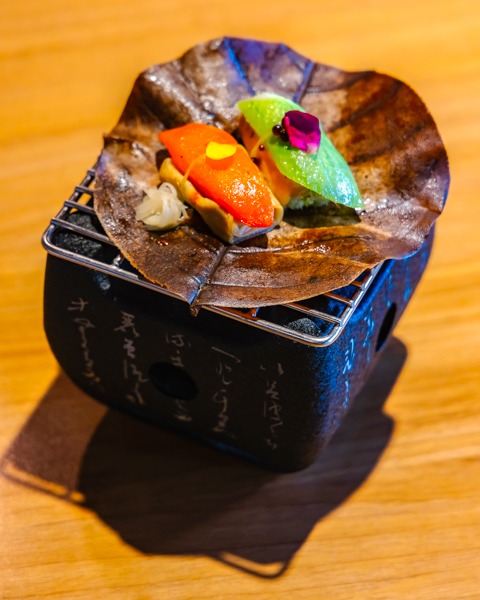
Another Green Star savory dish imitated the look of miniature Japanese sweets. It included beet-pickled daikon in Mediterranean style, an osmanthus jelly, and a tiny spring roll filled with various fresh fruits, vegetables, and other treasures, including slivered apple and peanut powder.
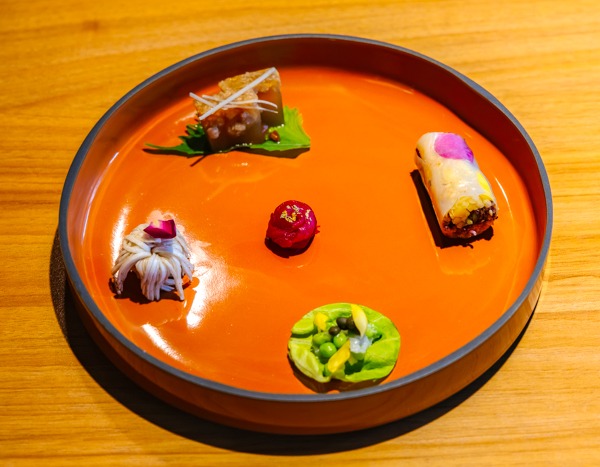
Truffle soup was served in a luxurious glazed ceramic vessel adorned with a chrysanthemum, leafy greens, and dry ice.
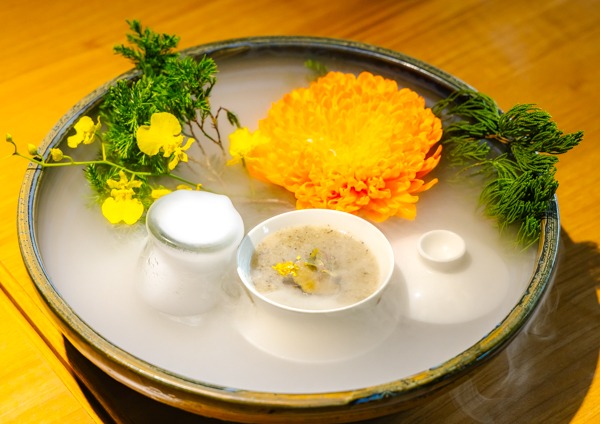
One course took three ingredients known for their somewhat slimy textures – mountain yam, okra, and natto – and turned these into something magical in Chef Hsueh’s hands; heaped with edible flowers and red dragon fruit, the fermented tang of the natto came through as a balance to the delicate flavors of the mountain yam and sweet fruit – without a hint of undesirable mouthfeel. The dessert was a refreshing wagashi jelly paired with high-quality Oriental Beauty tea.

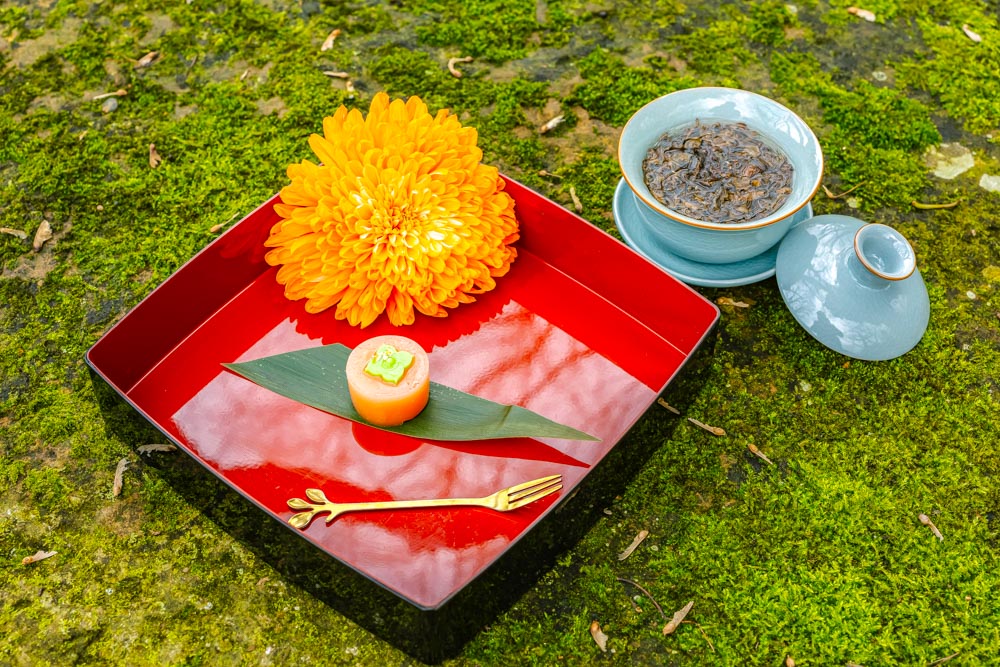
In the Classic Set, standout dishes included a vegetable-broth soup featuring goji berries and a carved daikon flower immersed in a beguilingly complex broth.
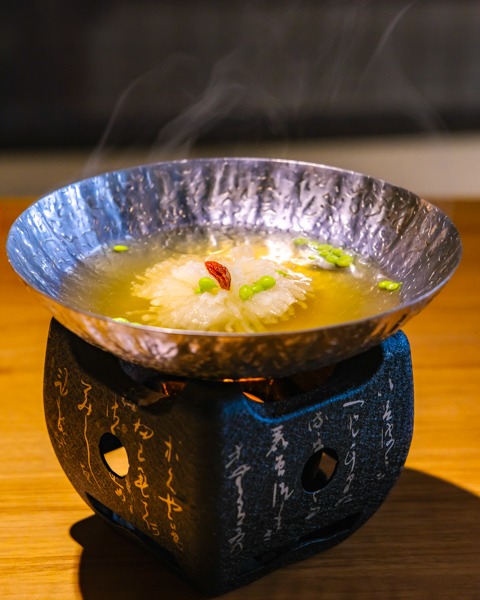
Teriyaki-crusted mushrooms combined sweet and savory, and a konjac, peanut tofu, and mountain yam salad was a panoply of textures.
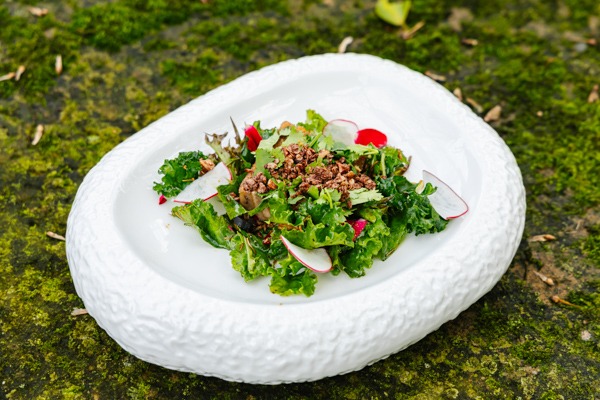
A large paper-wrapped dish was baked in French style and included non-GMO yellow lentils, smoked vegetarian bacon, and Napa cabbage, flavored with cashew cream and herbaceous citronella leaves.
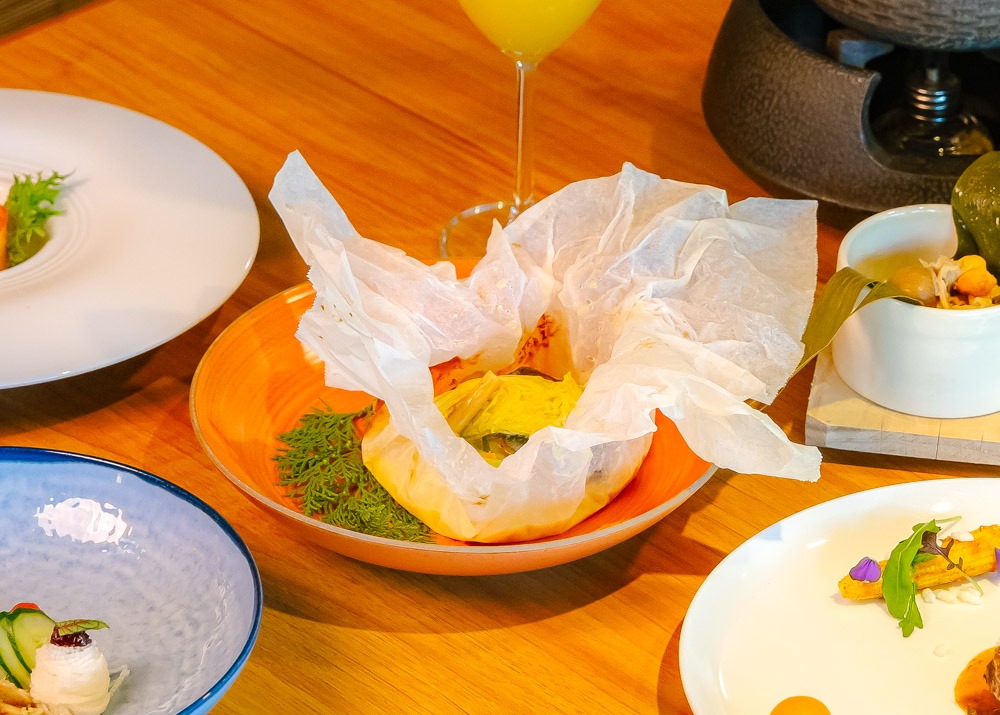
The dessert was douhua (tofu pudding) made with frothy almond milk paired with a longan cake and snow lotus jelly.
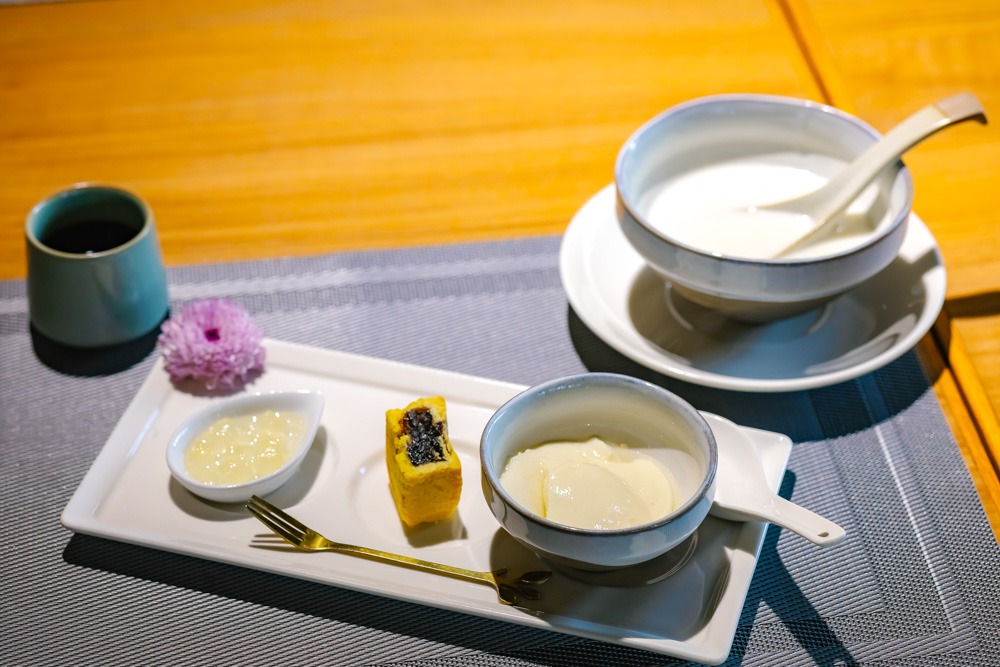
The main course for both sets was a monkey head mushroom that had been carefully prepared to attain a perfect creamy texture. For the Green Star Set, this was paired with a sauce reminiscent of Hollandaise, asparagus, daikon stars, truffled alfalfa, and true morels.
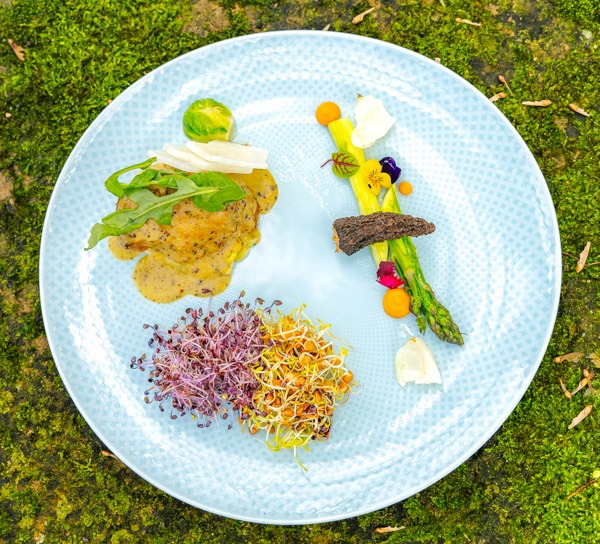
For the Classic Set, the dish was served with a darker peppery sauce with baby corn, puffed rice, edible flowers, pickled daikon, and persimmon.
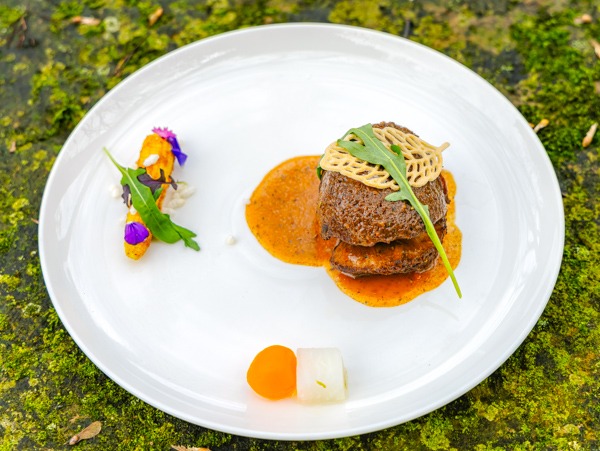
Yangming Spring
(陽明春天)
Tel: (02) 2862-0178
Add: No. 119-1, Jingshan Rd., Shilin Dist., Taipei City
(台北市士林區菁山路119之1號)
Hours: Mon 11:30am-2:30pm
Tue-Sun 11:30am-9pm
Website: ymspring.com.tw
FB: facebook.com/ymspring2007
Michelin: guide.michelin.com/tw/en/taipei-region/taipei/restaurant/yangming-spring-shilin
Hosu
This Michelin Green Star restaurant is a culinary love letter to Taiwan. Like 3927, Hosu has mastered the art of Taiwanese contemporary cuisine, but with an aesthetic that infers a sense of preservation: antiques, cast iron, weathered wood, Japanese ceramics in muted tones, and an overall wabi-sabi feel. Hosu’s menu includes meat; the restaurant is especially well-known for its char-grilling techniques.
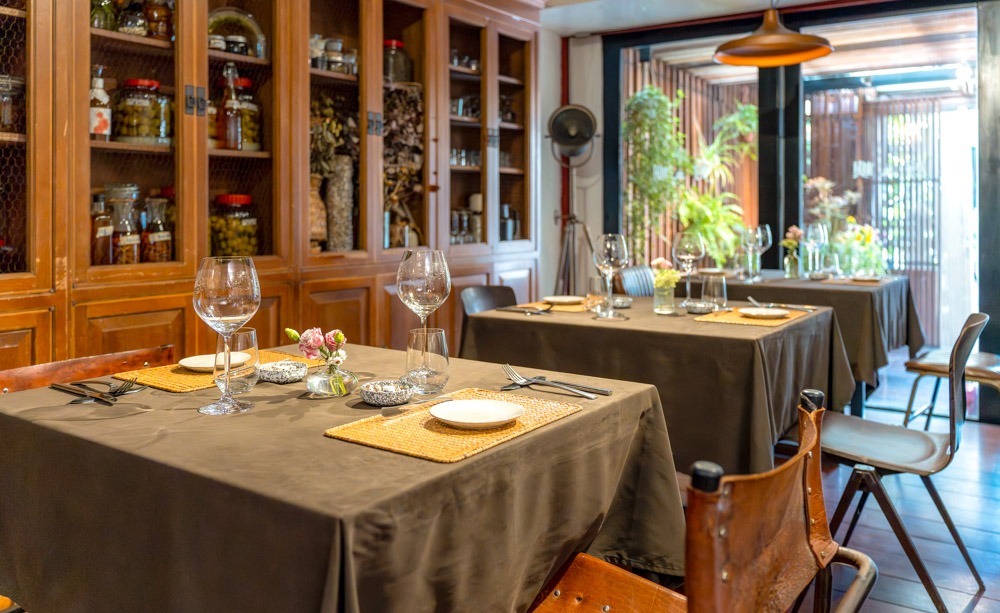
Seasonal, local, and sustainably curated produce form the basis of Hosu’s cuisine, underpinned by an ethos of highlighting environmental issues in Taiwan’s “mountains, rivers, pastures, and seas.” The restaurant’s Chinese name translates as “good island,” and is also a play on words for “good things”; indeed, owner Ian Lee prioritizes sourcing ingredients from “good people” as well. Past seasonal dishes have included unique and local ingredients and tend to read in a similar meter, like song lyrics: imagine black eel with plum and red yeast rice (anka), sweet potato buns with smoked goose fat and balsamic vinegar, goose with black garlic and wontons, pork belly with tamarind and betelnut flower, or suckling pig with fermented bamboo shoots and lily bulb.
Although Hosu’s dishes are not specifically Taiwanese, its use of local ingredients and cooking methods evokes the best of Taiwan, letting slivers of tastebud nostalgia shine through. Perhaps it will happen with the sour herbaceousness of roselle or the muted fishiness of mullet roe. Perhaps it’s to be found in the fattiness of pork belly or the texture of betelnut flower.
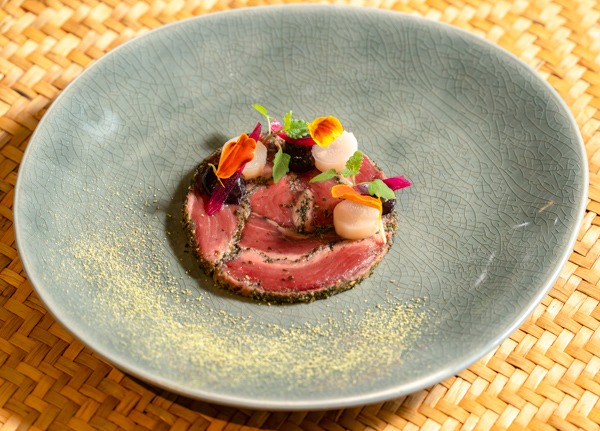
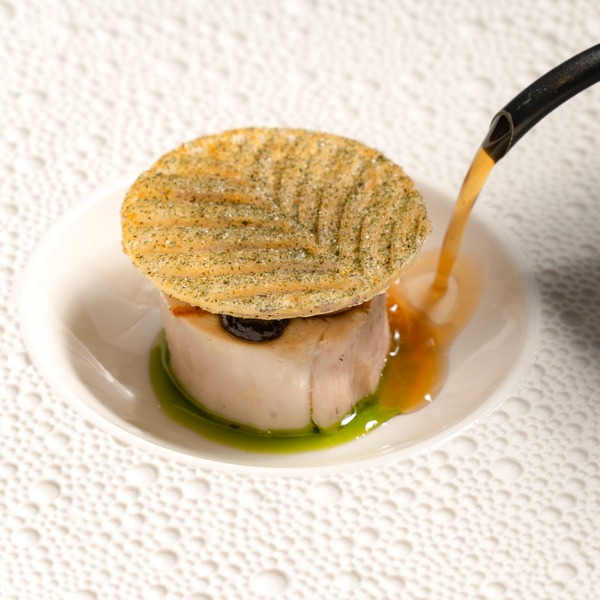
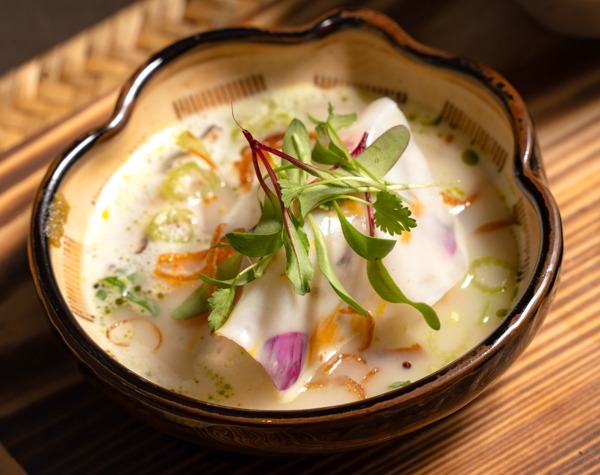
Hosu goes beyond sustainable, ethical supply chains to retain its Green Star; QR codes are frequently included on its menus to allow patrons to explore the stories behind various ingredients. Lee and his team also make a conscious effort to maintain knowledge about local and seasonal produce, to counteract the “supermarket effect” of everything being available all the time, regardless of environmental impact or flavor.
Hosu
(好嶼)
Add: No. 17, Aly. 20, Ln. 300, Sec. 4, Ren’ai Rd., Da’an Dist., Taipei City
(台北市大安區仁愛路四段300巷20弄17號)
Hours: 5:30pm-9pm
IG: www.instagram.com/hosu_tw
FB: facebook.com/hosutaiwan
Michelin: guide.michelin.com/tw/en/taipei-region/taipei/restaurant/hosu
MUME
Another restaurant recommended by Michelin, MUME, has taken plating and presentation to a new level. The dark, minimal interior finished with industrial touches serves as the backdrop to a riot of color in each dish.
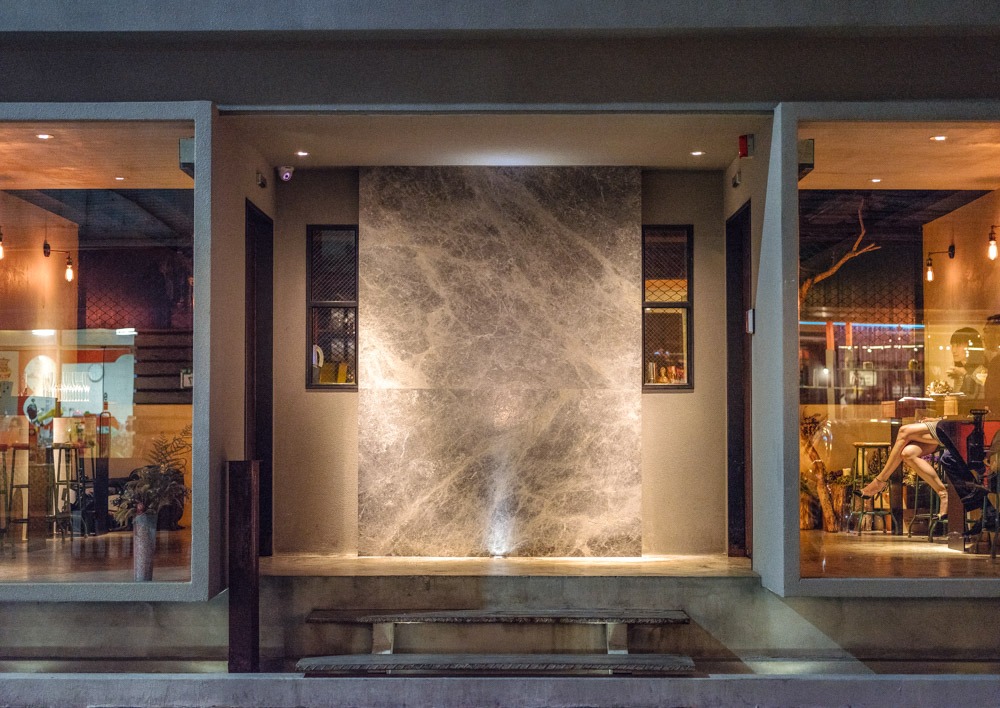
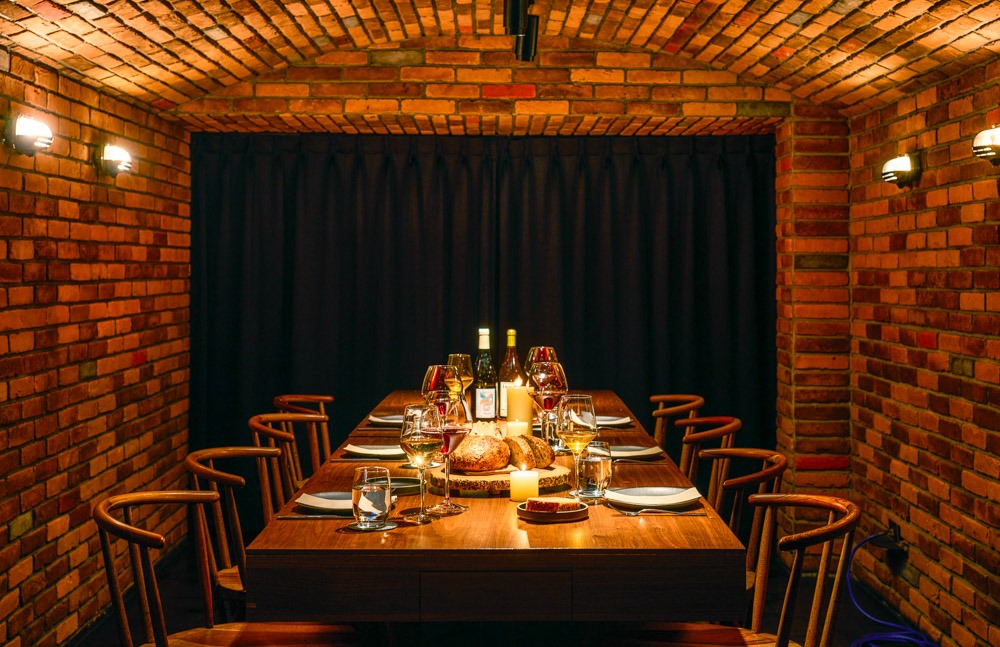
Owner and chef Richie Lin, a native of Hong Kong, has brought together a team with extensive international experience – from Australia’s Quay to New York’s Per Se to Copenhagen’s NOMA and Hong Kong’s NUR. Together, Lin, along with chefs Long Xiong and Kai Ward, create some of the finest contemporary Taiwanese cuisine in the country.
Beyond Michelin, MUME has been named the “best restaurant in Taiwan” every year but two since 2019 by The World’s 50 Best website, and ranked the 7th best in Asia. As with other distinguished restaurants, Lin and his team prize sustainability and local produce, offering a rotating tasting menu that makes wonderful use of the highest-quality Taiwan ingredients.
Edible flowers and layered flavors are a staple at MUME, as are ingredients that also serve as artistic or sculptural elements. Its current tasting menu includes tartlets topped with French sour cream and trout roe, combining a touch of sour and bitter in one bite. Another appetizer involves crisped towers of crab meat with wild rice shoots and numbing green pepper mayonnaise. Following that is Murray cod prepared in confit with sweet peas and coconut broth. The Mahi Mahi comes with fresh Taiwanese scallops paired with allium spice and lemon thyme oils.
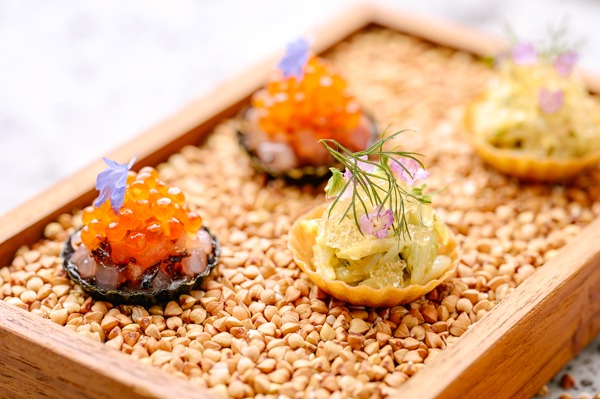
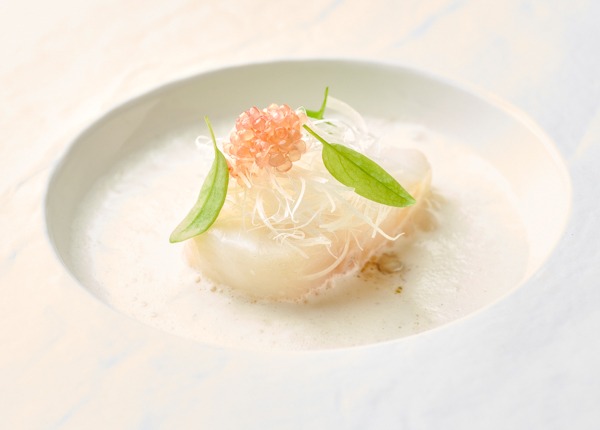
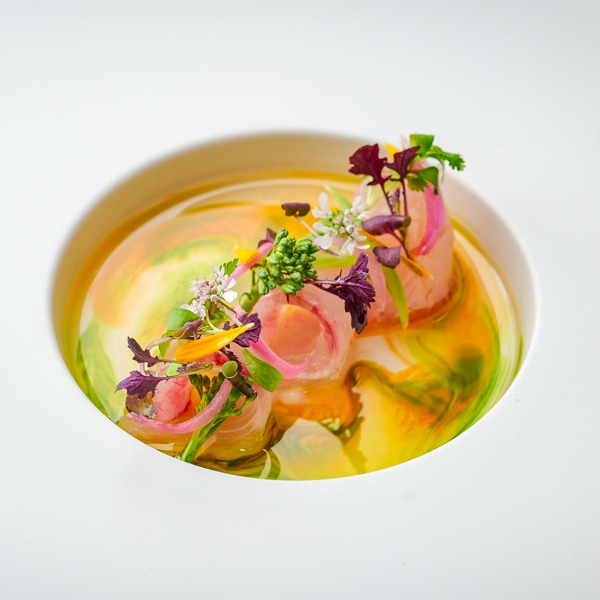
The interior may be pared-back and minimal, but as with all Michelin restaurants, the flavors certainly are not.
MUME
Add: 1F, No. 28, Siwei Rd., Da’an Dist., Taipei City
(台北市大安區四維路28號1樓)
Hours: 5:30pm-11pm
Website: www.mume.tw
IG: instagram.com/mume_taiwan
FB: www.facebook.com/mume.taiwan
Michelin: guide.michelin.com/tw/en/taipei-region/taipei/restaurant/mume
About the author
Jenna Lynn Cody
Jenna is an American woman living and working in Taipei, Taiwan.




